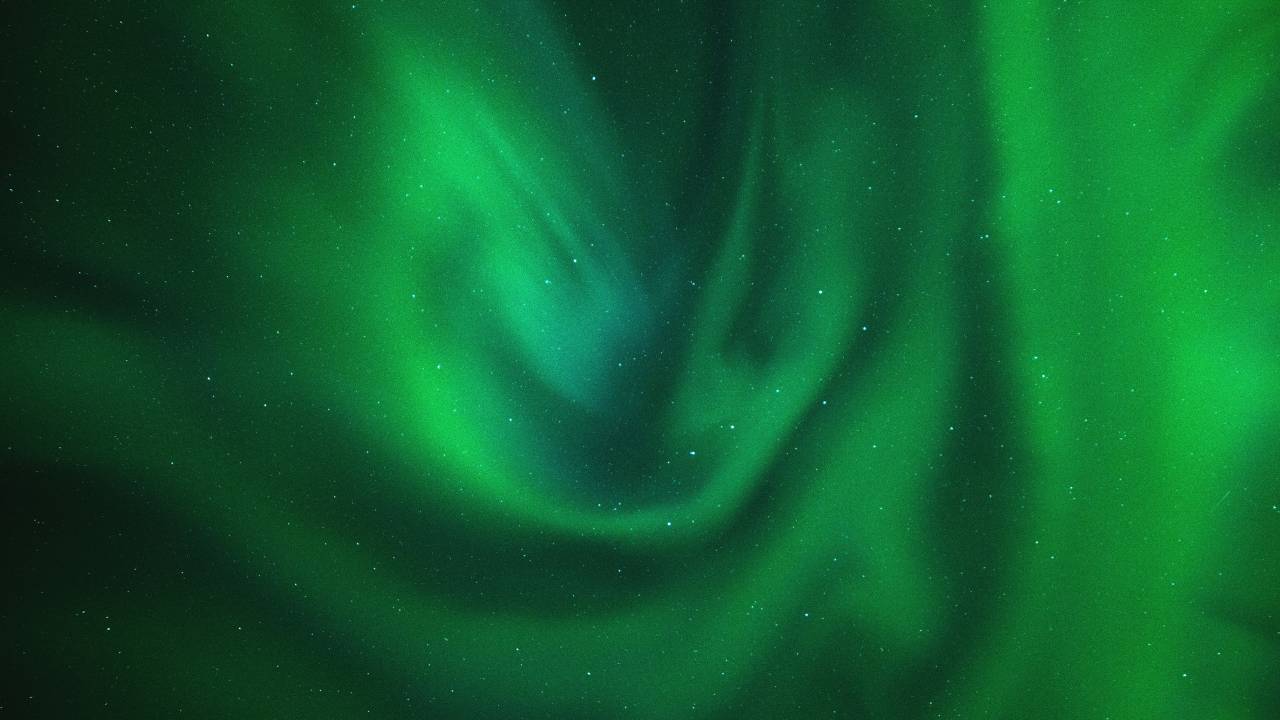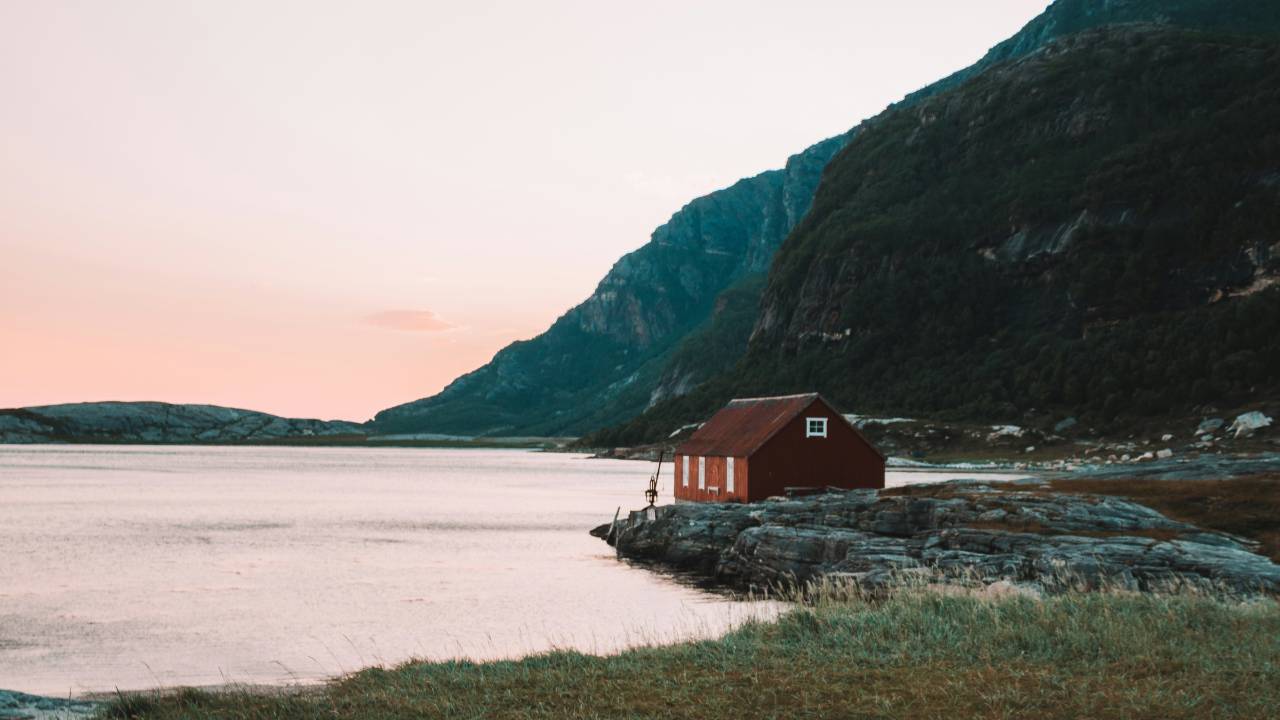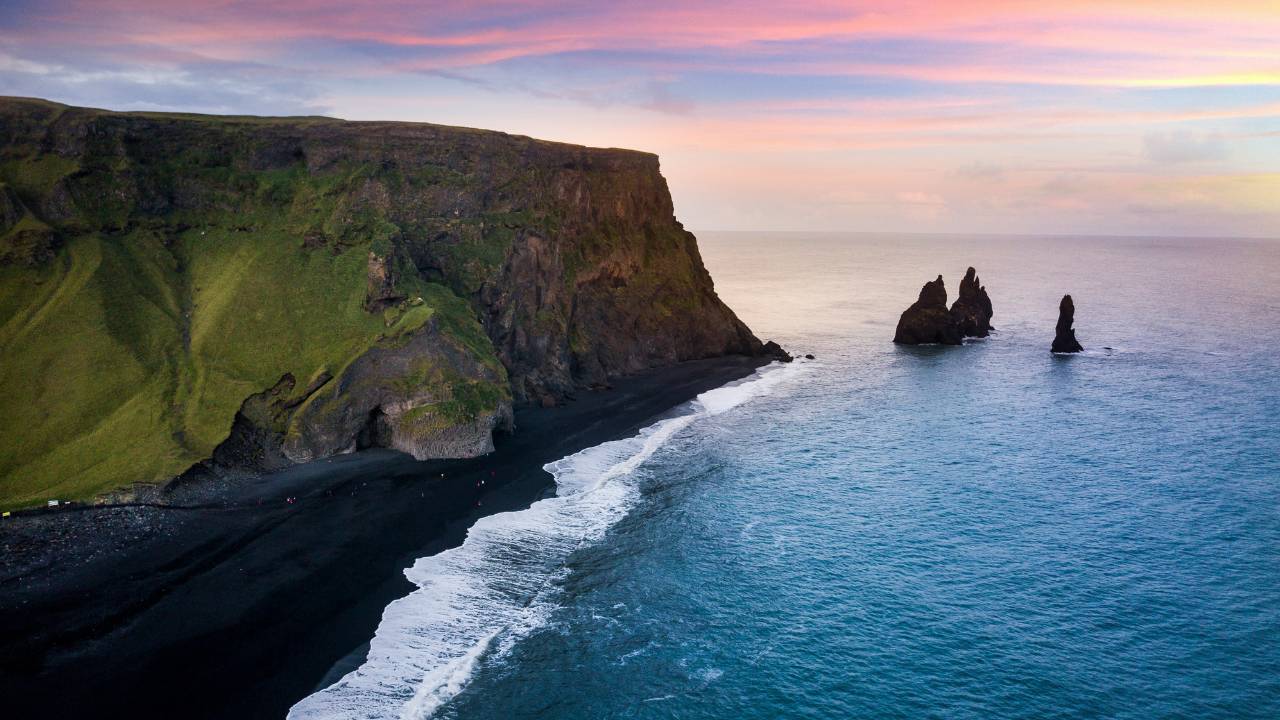The Northern Lights, also known as the Aurora Borealis, stand as one of the most spectacular natural phenomena on Earth. Imagine standing under a vast night sky, watching as waves of colour dance above you, painting the heavens with a palette of greens, purples, and pinks. This breathtaking light show isn’t just a thing of beauty; it’s a glimpse into the complex interactions that occur in our planet’s upper atmosphere.
The lights you see are the result of charged particles from the sun colliding with gases like oxygen and nitrogen in Earth’s atmosphere. This collision results in a hypnotic display of light that can be seen in the magnetic polar regions of the northern hemisphere. Witnessing the Northern Lights is a unique experience that changes with every appearance, as the intensity and patterns of the lights are never the same twice.
To understand the best times to see the Aurora, your attention should be on the long, dark nights of winter and times of increased solar activity. Although it might require braving cold temperatures, the reward of seeing the Northern Lights in full glory is an unforgettable experience shared by many who venture close to the Arctic Circle. Whether you’re planning a trip to view this natural wonder or just dream of witnessing it someday, knowing these facts can heighten your appreciation for one of nature’s most magnificent performances.
Historical Perspectives and Mythology
Your journey through the Northern Lights isn’t just a natural phenomenon; it’s a voyage through millennia of human storytelling and scientific curiosity.
Ancient Legends and Cultural Significance
The Northern Lights have inspired awe and reverence in various cultures throughout history. In Norse mythology, they were believed to be the reflections of the Valkyries’ armour, guiding fallen warriors to the afterlife. The Vikings would gaze upon the auroras with a sense of destiny, interpreting them as omens of war or a gift from the gods.
To the Inuit communities of the Arctic, the lights were perceived as the spirits of their ancestors playing a game of football with a walrus skull. Such legends were embedded in millennia of storytelling, demonstrating the integral role auroras played in their life and culture.
The Maori of New Zealand, thousands of miles away, had their interpretations of the Southern Lights, or Aurora Australis. They termed these lights “Tahu-nui-a-rangi,” viewing them as reflections of campfires that spirits of their ancestors lit in the distant heavens.
Scientific Discoveries through History
The journey from myth to science regarding the Northern Lights started with the curious minds of ancient scholars. However, it wasn’t until the Renaissance period that significant strides were made.
Galileo Galilei, an eminent figure of the time, coined the term “Aurora Borealis” in 1619, wrongly attributing the lights to sunlight reflected from the atmosphere. He drew upon the name Aurora, the Roman goddess of dawn, adding “Borealis,” a term that comes from the Greek “Boreas” meaning north wind.
Over centuries, the pursuit to understand the Northern Lights scientifically deepened. The advent of the Aurorasaurus project, a citizen science initiative, utilises real-time data and public reports to study auroral visibility and forecast these magnificent light shows. Its establishment signifies how through history, curiosity about the lights not only survived but thrived, marrying ancient intrigue with modern technology.
Astronomical Origins and Solar Interactions

When you gaze up at the Northern Lights, you’re witnessing more than just a stunning light show; you’re seeing the result of complex interactions between the Sun’s activity and Earth’s magnetic shield.
Solar Wind and Magnetosphere Dynamics
Solar Wind: A constant stream of solar particles, emitted by the Sun, flows through space at speeds of about 500 km/s. These charged particles, mostly electrons and protons, interact with Earth’s magnetic field as they approach our planet.
- Magnetic Field Interaction: Upon encountering Earth’s magnetic field, solar wind particles are funnelled towards the magnetic poles. In these regions, the solar wind can enter the upper atmosphere and collide with gases like oxygen and nitrogen.
You Should Know:
- The collision process causes these gases to ionise and emit photons, which create the luminescent displays known as auroras.
Coronal Mass Ejections and Geomagnetic Storms
Coronal Mass Ejections (CMEs): Occasionally, the Sun releases massive bursts of solar particles and magnetic fields into space. These CMEs are much denser than the ordinary solar wind.
- Interaction with Earth:
- If these CMEs reach Earth, they can cause intense magnetic storms, disrupting satellites and communication systems.
- Their interaction with Earth’s magnetic field can result in more spectacular and intense auroral displays.
- Impact on Other Planets:
- Jupiter and Saturn, with their stronger magnetic fields, also experience auroras due to similar solar interactions.
- The effects of solar activity are not limited to Earth and can be observed throughout the solar system.
Visual Phenomena and Optical Characteristics
Discover the radiant display of the Northern Lights as you learn about the unique visual elements and the conditions that enhance their visibility.
Colours and Patterns in the Sky
The Northern Lights, or Aurora Borealis, illuminate the sky in vivid hues primarily due to the interaction between Earth’s magnetic field and charged particles from the sun. Green is the most common colour you’ll observe due to oxygen molecules located about 100 km above the Earth, while red, yellow, blue, and violet can also appear depending on the altitude and type of gas molecules involved. The patterns manifest as curtains, rays, spirals, or diffuse clouds, creating a dynamic celestial tapestry. Viewed from the Northern Hemisphere, the lights are a breathtaking sight, particularly within the auroral oval, a zone with higher chances of visibility.
Visibility Factors and Viewing Times
To witness the majesty of the Northern Lights, certain conditions must be in your favour. Visibility is optimal during dark, clear nights, and it greatly improves during the equinoctial months of March and September. Light pollution should be minimal, so heading out to areas far from city lights, such as in Greenland, enhances your chances.
Here are key factors for optimal viewing:
- Darkness: Essential for spotting the lights. Plan around the new moon and avoid inner-city viewing.
- Clear Skies: Cloud cover can obscure the lights, so check weather forecasts for clear conditions.
- Location: The further you are within the auroral oval, the better. This oval covers areas over the Arctic and Antarctic circles in both hemispheres.
- Solar Activity: Increased solar winds can result in more vivid displays.
Being aware of these factors can prepare you for a successful viewing experience to savour the magnificence of the Northern Lights with your own eyes.
Geographic Occurrence and Optimal Locations

The Northern Lights, or aurora borealis, are a celestial spectacle that you can observe in specific regions near the Earth’s poles. The geomagnetic field channels solar particles, creating these lights primarily in the auroral zone, which is where the best viewing experiences occur.
Auroral Zones and Prime Viewing Spots
The auroral zone is an area about 20° to 25° latitude from the geomagnetic poles. It’s where Northern Lights activity is most frequent and intense. You’ll find this zone covers a band including parts of Norway, Sweden, Finland, Canada, Alaska, and Russia. In the Southern Hemisphere, Antarctica and the southern parts of New Zealand and Australia are equivalent spots for the aurora australis.
- Norway: The region of Tromsø is renowned for its Northern Lights displays.
- Iceland: Offers expansive dark skies ideal for viewing.
- Canada: Visit Yellowknife in the Northwest Territories for high aurora activity.
- Finland: Lapland is picturesque and a hotspot for aurora sightings.
- Sweden: The area above the Arctic Circle, such as Abisko, is known for clear skies.
- Alaska: Fairbanks is situated in a prime auroral zone.
- Russia: Siberia’s vast territories provide great visibility away from city lights.
Tourism and Best Times to Visit
Northern Lights tourism thrives in the regions mentioned above, particularly during the peak viewing seasons.
- Best Viewing Season: From late September to early April when nights are longest and skies darkest.
- Peak Times: Around the equinoxes in late September and late March when geomagnetic activity is stronger.
- Tourist Facilities: Regions like Lapland in Finland, offer glass igloos for overnight stays to experience the aurora in comfort.
- Special Tours: Many places offer guided tours with experts for optimal viewing opportunities, including photography tours.
When planning your trip, checking for local weather and solar activity forecasts is key to ensuring the best chances of witnessing this natural wonder.
To enhance your Iceland holiday, consider booking one of the specially curated packages, such as the Iceland Bronze Package, for a more affordable option. These packages offer a blend of Northern Lights viewing with other Icelandic adventures, ensuring a memorable trip.
Scientific and Environmental Significance
In exploring the scientific and environmental significance of the Northern Lights, you will discover how they are not just a stunning visual phenomenon but also a key to understanding the complex interactions within Earth’s atmosphere and its magnetic environment.
Earth’s Atmosphere and Magnetic Poles
The Northern Lights, also known as the Aurora Borealis, offer you a spectacular illustration of Earth’s magnetic field at work. Auroral displays occur when charged particles from the sun, carried by the solar wind, collide with the Earth’s atmosphere. These interactions predominantly take place near the magnetic poles, where the Earth’s magnetic field channels particles downwards.
- Oxygen and Nitrogen Involvement: The particles collide with oxygen and nitrogen in the atmosphere, causing these gases to emit light. The colour of the aurora depends on which gas is involved and how high in the atmosphere the interaction occurs:
- Oxygen emits green or red light, the most common colours.
- Nitrogen produces blue or pinkish-purple hues.
This atmospheric spectacle is not just a visual treat; it enhances your understanding of atmospheric composition and the behaviours of charged particles under the influence of Earth’s magnetic field.
Auroras Beyond Earth
The phenomenon of auroral displays extends beyond our planet. The presence of magnetic fields and atmospheres on other celestial bodies means auroras can happen there too.
- Mars: NASA’s Maven spacecraft has documented aurora-like phenomena in Mars’s atmosphere, which isn’t as vivid as Earth’s due to its thin atmosphere.
- Uranus: This ice giant’s unusual magnetic field and axis rotation contribute to uniquely complex aurora displays, which have been observed by the Hubble Space Telescope.
The study of auroras on other planets provides you with the broader context of planetary science and enhances our understanding of the different ways magnetic fields and atmospheres interact throughout the solar system. Even the International Space Station (ISS) has provided astronauts with first-hand observations of these lights, linking the auroral phenomena with space weather studies.
Note: Observations of auroras can also support environmental monitoring, as shifts in their activity may indicate changes in space weather and solar activity, which in turn can affect satellite operations and communication systems on Earth.
Photography and Observation Techniques

To capture the ethereal beauty of the Northern Lights, you’ll need a blend of patience, the right equipment, and a touch of luck with timing. The following advice will boost your chances of photographing this natural spectacle successfully.
Tips for Capturing Auroral Displays
- Timing is Key: Aim for the peak auroral activity by consulting aurora forecasts and plan your shoot during the darkest hours, typically between 10 pm and 2 am.
- Camera Settings: Your camera should be set to a high ISO, between 800 and 3200, to make the colours of the aurora visible. Use a wide aperture (f/2.8-f/4) and a slow shutter speed (5-30 seconds) to capture the aurora’s movements.
- Stability: Mount your camera on a tripod to prevent blurring during long exposures.
- Focus: Manually focus on a distant light to ensure sharpness or set the lens to infinity (∞) and adjust slightly if needed.
Tools and Technological Advancements
- Cameras: A digital SLR or mirrorless camera with manual mode capability is most suitable for aurora photography.
- Lenses: Wide-angle lenses with a large maximum aperture (at least f/2.8) are preferable to encompass the expansive auroral displays.
- Remote Shutter Release: To avoid camera shake, use a remote shutter release or your camera’s built-in timer.
- Apps and Websites: Leverage technology by using apps or websites that provide real-time aurora alerts and forecasts.
By integrating these techniques and tools into your photography endeavours, you’re well on your way to capturing the Northern Lights in their full glory, right from your spot on Earth. Remember, the key elements are clear skies, minimal light pollution, and a dash of persistence.
Future Research and Space Weather Prediction
Research into the Northern Lights, known scientifically as the Aurora Borealis, continually evolves as you and the wider scientific community seek to understand its complexities. You might find NASA at the forefront, driving initiatives that delve into the behaviour of charged particles from the solar winds as they interact with Earth’s magnetosphere and ionosphere.
- Ionosphere Studies: Upcoming missions aim to further explore how gaseous particles in the ionosphere contribute to the phenomenon. This may involve experiments conducted from the International Space Station.
- Magnetosphere Monitoring: Advanced satellites and instruments are being developed to monitor the Earth’s magnetosphere, the region affected by space weather.
- Career Opportunities: The demand for experts in space weather prediction is growing. Your potential future career might include roles in satellite technology or atmospheric research.
Understanding the flow of solar winds and the subsequent reactions of gas particles in the atmosphere is crucial for anticipating space weather. These predictions are not just for academic curiosity:
- Precise forecasts can help mitigate the effects of space weather on satellites and reduce static interference in communications.
- Research also contributes to the GEW (Global Electric Weather) framework, which assists in predicting Earth-based weather.
Your contribution to this field, whether as a passionate observer or as a professional researcher, is an integral part of humanity’s journey in both exploring beyond our planet and safeguarding our technological infrastructure.


